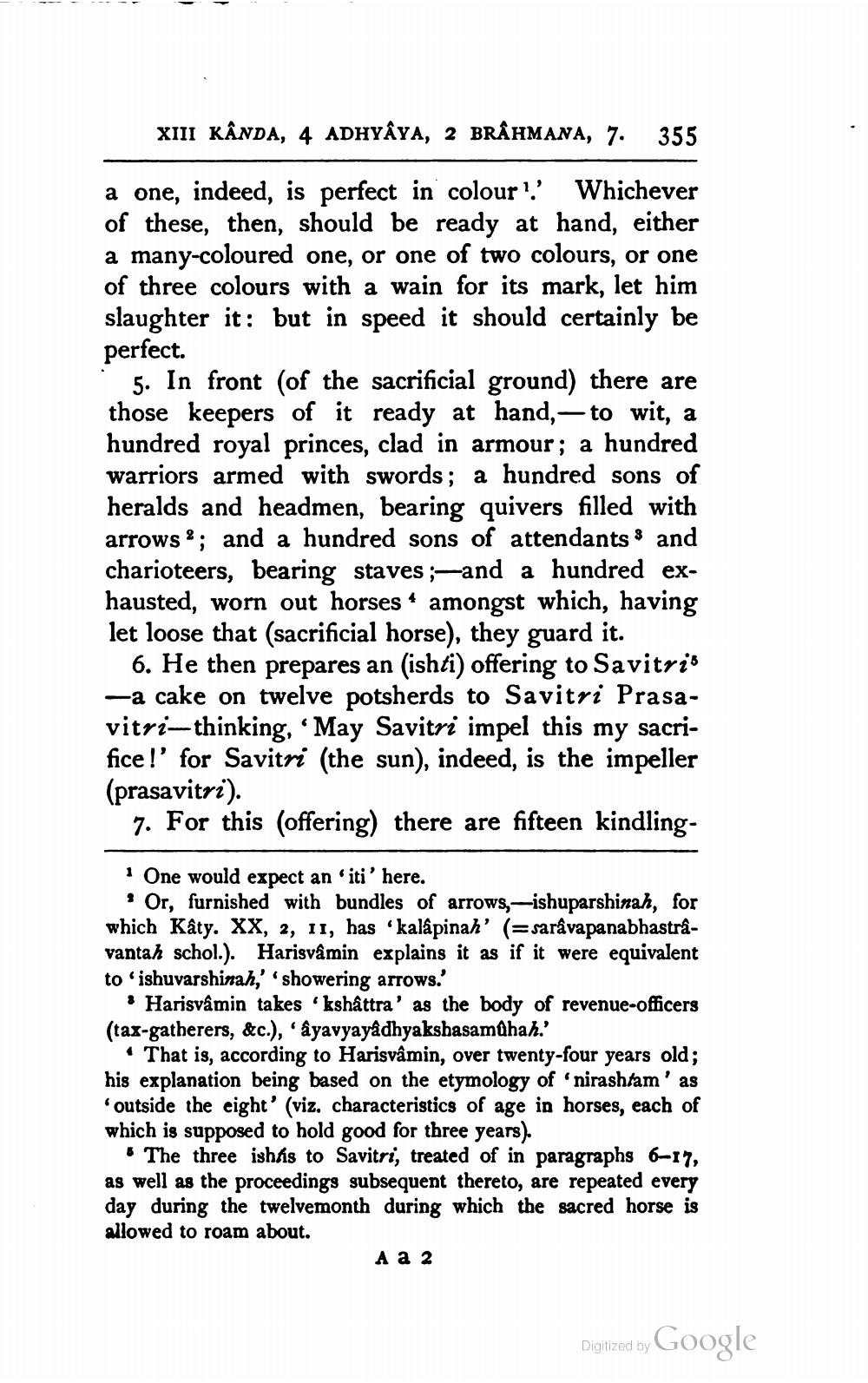________________
XIII KANDA, 4 ADHYAYA, 2 BRAHMANA, 7. 355
Whichever
a one, indeed, is perfect in colour'.' of these, then, should be ready at hand, either a many-coloured one, or one of two colours, or one of three colours with a wain for its mark, let him slaughter it but in speed it should certainly be perfect.
5. In front (of the sacrificial ground) there are those keepers of it ready at hand,-to wit, a hundred royal princes, clad in armour; a hundred warriors armed with swords; a hundred sons of heralds and headmen, bearing quivers filled with arrows; and a hundred sons of attendants and charioteers, bearing staves; and a hundred exhausted, worn out horses amongst which, having let loose that (sacrificial horse), they guard it.
6. He then prepares an (ishti) offering to Savitri3 -a cake on twelve potsherds to Savitri Prasavitri-thinking, 'May Savitri impel this my sacrifice!' for Savitri (the sun), indeed, is the impeller (prasavitri).
7. For this (offering) there are fifteen kindling
1 One would expect an 'iti' here.
Or, furnished with bundles of arrows,-ishuparshinah, for which Kâty. XX, 2, 11, has 'kalâpinah' (=sarâvapanabhastrâvantah schol.). Harisvâmin explains it as if it were equivalent to 'ishuvarshinah,' 'showering arrows.'
Harisvâmin takes 'kshâttra' as the body of revenue-officers (tax-gatherers, &c.), 'âyavyayâdhyakshasamûhah.'
That is, according to Harisvâmin, over twenty-four years old; his explanation being based on the etymology of 'nirashfam' as 'outside the eight' (viz. characteristics of age in horses, each of which is supposed to hold good for three years).
The three ishás to Savitri, treated of in paragraphs 6-17, as well as the proceedings subsequent thereto, are repeated every day during the twelvemonth during which the sacred horse is allowed to roam about.
A a 2
Digitized by
Google




